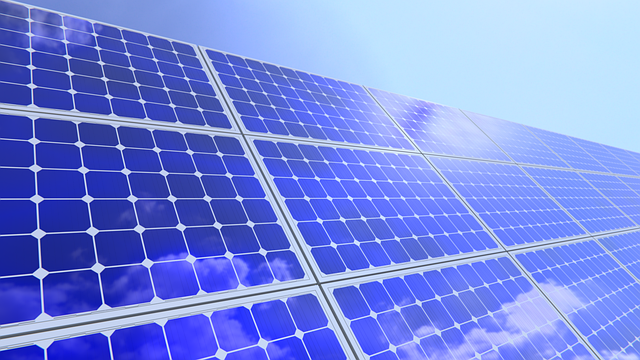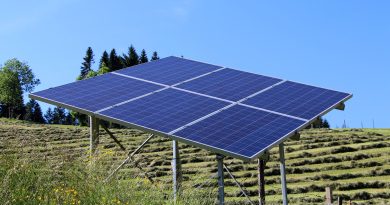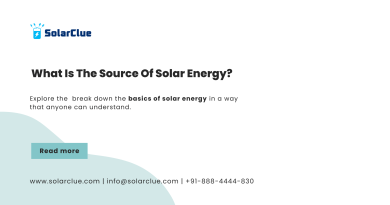On-Grid Solar System: How It Works and Benefits
Solar energy is becoming increasingly popular as a clean and sustainable source of power. While many people are familiar with solar panels and their ability to convert sunlight into electricity, the workings of an on-grid solar system may still be a mystery to some. In this blog, we will delve into the details of how an on-grid solar system operates, providing you with a comprehensive understanding of this innovative technology.
Table of Contents
Understanding On-Grid Solar Systems
On-grid solar systems, also known as grid-tied or grid-connected systems, are connected directly to the local utility grid. This means that electricity generated by the solar panels can be used to power your home or business, while any excess electricity can be fed back into the grid for others to use. In essence, on-grid solar systems allow you to generate your own electricity while staying connected to the main power supply.
Components of an On-Grid Solar System
To better comprehend how an on-grid solar system works, it is important to familiarize yourself with its key components. These include:
1. Solar Panels:
Solar panels are the heart of any solar system. Made up of photovoltaic cells, they convert sunlight into direct current (DC) electricity.
2. Inverter:
The inverter is responsible for converting the DC electricity produced by the solar panels into alternating current (AC) electricity, which can be used to power your home or business. AC electricity is the standard form of electricity used by most appliances and devices.
3. Electrical Meter:
An electrical meter, also known as a bi-directional meter, keeps track of the electricity flowing into and out of your property. It measures the amount of electricity consumed from the grid and the excess electricity generated by your solar panels that is fed back into the grid.
4. Utility Grid:
The utility grid refers to the network of power lines and transformers that deliver electricity to homes and businesses in your area. When your solar system produces more electricity than you need, the excess energy flows back into the utility grid.
How Does an On-Grid Solar System Work?
1. Solar panels absorb sunlight:
Solar panels are strategically placed on your property, typically on the roof, to maximize sun exposure. The photovoltaic cells within the solar panels absorb sunlight and convert it into DC electricity.
2. Inverter converts DC to AC electricity:
The DC electricity produced by the solar panels is sent to the inverter. The inverter then converts this DC electricity into AC electricity, which can be used to power your home or business.
3. Power your property with solar energy:
Once the electricity is converted into the appropriate form, it can be used to power your appliances, lighting, and electronics. Any electricity not immediately used is stored or fed into the utility grid.
4. Meter tracks electricity usage:
The electrical meter measures the electricity usage of your property. When your solar system generates more electricity than you consume, the excess energy flows back into the utility grid, and your electrical meter records the amount of electricity fed into the grid.
5. Receive credits or compensation:
As your excess electricity flows back into the utility grid, you may receive credits or compensation from your electric utility provider. These credits can offset the costs of any electricity you draw from the grid during times when your solar system is not generating enough electricity to meet your needs.
Benefits of an On-Grid Solar System
On-grid solar systems offer a range of benefits that make them an attractive choice for many homeowners and businesses:
– Cost savings: By generating your own electricity, you can significantly reduce your monthly electricity bills. In some cases, you may even be able to eliminate your electricity expenses entirely.
– Reduced carbon footprint: On-grid solar systems produce clean, renewable energy, reducing reliance on fossil fuels and helping to mitigate climate change.
– Grid reliability: Since on-grid solar systems are connected to the utility grid, you can still access electricity from the grid during periods when your solar system is not generating enough power, such as during cloudy days or at night.
– Return on investment: Investing in a solar system can provide a solid return on investment over time. With decreasing solar panel costs and potential government incentives, the payback period for your investment in an on-grid solar system is continually decreasing.
Conclusion
Empower your energy future with on-grid solar systems from SolarClue® – a practical and efficient way to harness the power of the sun while staying seamlessly connected to the local electrical grid. Understanding the intricacies of these systems and their components enables you to make informed decisions tailored to your energy needs. Experience the benefits of cost savings, reduced environmental impact, and enhanced grid reliability. Choosing on-grid solar systems is not just a smart decision; it’s a commitment to embracing a clean and sustainable energy future. Connect with SolarClue® today and step into a brighter, greener tomorrow.
Frequently Asked Questions
An on-grid solar system is a setup that connects to the local electric grid for energy generation.
By converting sunlight into electricity, utilizing it locally, and feeding excess power back into the grid.
The on-grid system is designed to shut down for safety reasons when there’s a power outage.
Net metering credits users for surplus electricity contributed to the grid, reducing overall energy costs.
No, as the grid serves as a virtual storage system, allowing users to draw power when needed.
Yes, scalability is achieved by adding more solar panels and inverters as needed.
On-grid solar systems contribute to emissions reduction and promote the use of clean, renewable energy.
Yes, various incentives such as tax credits, rebates, and net metering programs are available to encourage adoption.
Yes, by harnessing solar power, users can experience significant reductions in their overall electricity bills.
On-grid solar systems generally have a lifespan of 25 to 30 years with proper maintenance.



